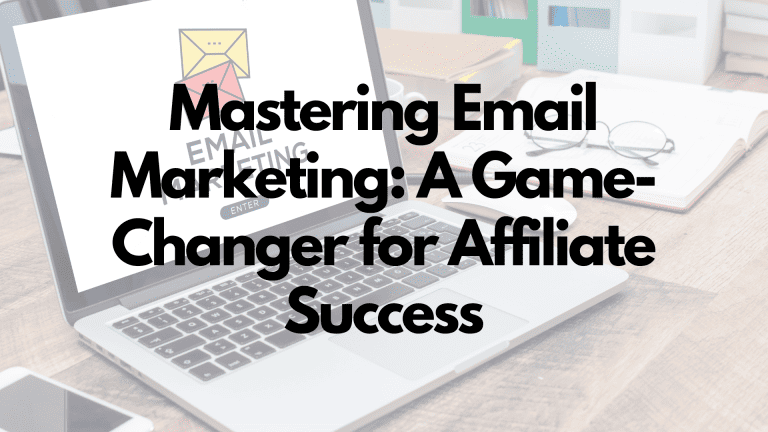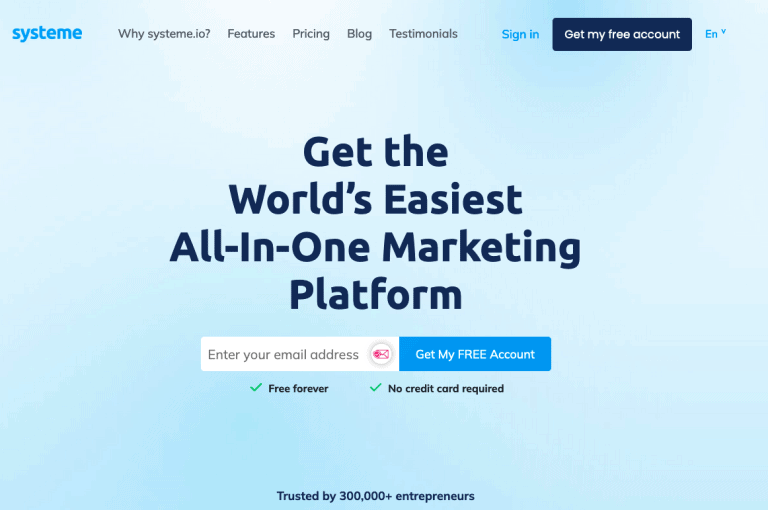
Email marketing remains a critical strategy for businesses aiming to engage with their subscribers and push their campaigns to success.
Despite its potential for high returns on investment, its effectiveness hinges on the execution of well-crafted strategies and the avoidance of pitfalls that plague many campaigns.
Common email marketing mistakes can derail even the most thought-out plan, from inundating subscribers with an overwhelming volume of emails to sending content that lacks personalization or value.
Understanding these email marketing mistakes is vital for businesses that rely on email communication to build relationships with their audience.
Mistakes such as neglecting the design of mobile-friendly emails or failing to segment the audience can significantly impact open rates and click-through rates.
Additionally, overlooking the importance of clear and compelling subject lines may lead to a higher incidence of ignored or deleted emails, undermining the campaign before it even has a chance to present its message.
Understanding Email Marketing Mistakes
When exploring email marketing, it is crucial to recognize the impact of mistakes on compliance, user consent, and the effectiveness of campaigns.
Inadequacies in these areas can significantly diminish open rates and the overall success of an email marketing strategy.
The Consequences of Ignoring GDPR
Businesses failing to adhere to the General Data Protection Regulation (GDPR) face significant risks.
Non-compliance can lead to hefty fines and damage to customer trust. GDPR demands explicit permission to contact individuals, ensuring their privacy and control over personal data.
Ignoring these requirements not only affects the target audience's perception but also the legal standing of an email campaign.
The Drawbacks of Complex Opt-in Forms
Opt-in forms should be straightforward to maximize consent rates. Overly complicated forms can hinder the growth of an email list, as prospects may be discouraged from signing up.
A simple, transparent opt-in procedure ensures a higher open rate, signalling a permission-based approach where recipients are more engaged and receptive to the email marketing campaign.
The Neglected Power of Segmentation
Segmentation is a key element often overlooked in email marketing. Sending generic messages to a broad audience leads to lower engagement.
By segmenting the audience based on demographics, interests, or behaviours, marketers can achieve a more personalized experience.
Tailored content increases relevance, which can positively impact open rates and the overall success of an email campaign.
Optimizing Email Campaign Timing
Email campaign timing is crucial for maximizing engagement and ensuring subscribers receive messages at the most opportune moments. Strategic scheduling can lead to better open and click-through rates.
Identifying The Best Send Times
Researchers have analyzed email engagement and found specific patterns that can be leveraged to identify optimal send times for different audiences.
- Weekdays vs. Weekends: Tuesdays and Thursdays are generally the best days for B2B email campaigns, while weekends may work better for B2C audiences.
- Time of Day: Emails sent in the late morning (10 AM to 12 Noon) often see higher open rates. However, the ideal time may vary based on the subscriber's time zone and daily routines.
Using tools that track email engagement can help marketers refine their send times. These tools benchmark performance and adjust send times based on subscriber interaction data.
Avoiding The Pitfall of Wrong Timing
Sending emails at the wrong time can result in low engagement rates and may even lead to higher unsubscribe rates.
Marketers should consider:
- Frequency: Over-emailing can irritate subscribers, while very infrequent emails might lead to subscribers forgetting about the brand. Finding a balance is key.
- Time Zones: For subscribers spread across different time zones, it's essential to segment lists and tailor send times accordingly to avoid sending emails at inconvenient hours.
A/B testing different time slots can reveal when subscribers are most likely to engage, allowing for data-driven adjustments to campaign timing.
Analyzing and Leveraging Email Analytics
Proper analysis of email analytics is paramount for assessing the performance of email marketing campaigns. Email analytics offer a quantitative glimpse into how recipients interact with emails.
When marketers review metrics such as open rates and unsubscribe rates, they gain invaluable insights that facilitate informed decisions to optimize return on investment (ROI).
Email open rate, the percentage of subscribers who open an email, is a critical metric. A low open rate suggests subject line reevaluation might be necessary.
To decode the nuances of audience preferences, they must scrutinize the data patterns over time.
Simultaneously, a comparison between different campaigns helps to pinpoint what resonates with their audience.
The unsubscribe rate is a direct indicator of audience disengagement. High unsubscribe rates necessitate a reassessment of content relevance and frequency of emails.
Experts encourage segmentation of audiences to curtail unsubscribe rates by ensuring that content is targeted and appeals to the interests of each segment.
Analytics tools often provide click-through rates and conversion data.
These metrics should be analyzed to gauge the effectiveness of calls-to-action and overall email design.
Any variances in the expected performance can lead to A/B testing of email elements to further optimize effectiveness.
Leveraging email analytics involves:
- Monitoring key performance indicators regularly
- Applying insights to tailor content strategies
- Performing A/B tests to refine email components
- Segmenting audiences for targeted campaigns
Achieving Email Consistency
Consistency in email marketing is crucial for building trust and maintaining a reliable brand image. One aspect to focus on is the cadence of email campaigns.
Marketers should establish a regular schedule for sending emails, whether daily, weekly, or monthly. This regularity ensures that subscribers know when to expect communication, thereby reducing the likelihood of emails being ignored or marked as spam.
Automation plays a critical role in maintaining consistency and avoiding email marketing mistakes.
Automated email workflows can trigger emails based on specific subscriber actions or time intervals, ensuring timely and relevant communication without the need for constant manual input.
Here's an example of how automation can enhance email consistency:
- Welcome Sequence: An automated sequence of emails that greets new subscribers, often setting the stage for the kind of content they can expect.
- Re-engagement Campaigns: Send targeted messages to subscribers who haven't interacted in a while to pull them back into the fold.
To guarantee the effectiveness of email campaigns, consider these best practices:
- Consistent Branding: Use the same color scheme, logo, and font style across all emails for instant recognition.
- Content Quality: Ensure that the content is relevant and of high quality, reflective of brand standards.
- Testing: Regularly test different aspects of email marketing (subject lines, content, send times) to optimize performance.
Crafting Engaging Welcome Emails
Welcome emails are a pivotal touchpoint in email marketing, as they set the stage for a business's relationship with a new subscriber. These initial correspondences are critical for making positive first impressions and should strike the perfect balance between informative and engaging.
To create an effective welcome email, they should start with a warm, genuine greeting.
It's essential to express gratitude to the individual for signing up. A welcome email must clearly state the value proposition and give a preview of what subscribers can expect in terms of content, offers, and frequency.
Best Practices for Welcome Emails:
- Personalization: Use the subscriber's name to add a personal touch.
- Clarity: Be concise and clear about the benefits of being a subscriber.
- Call-to-Action (CTA): Include a prominent CTA that encourages the recipient to take the next step, whether it’s to complete a profile, make a purchase, or read a blog post.
| Do | Don't |
|---|---|
| Use a friendly tone | Be overwhelming with too much information |
| Offer a welcome discount | Use generic greetings |
| Provide clear next steps | Ignore mobile optimization |
Designing Emails with Clear CTAs
The effectiveness of an email marketing campaign is often judged by its ability to prompt action. This hinges on the presence of well-designed calls-to-action (CTAs).
The Importance of a Strong Call-To-Action
A CTA serves as the bridge between email content and the desired action, such as making a purchase, signing up for a webinar, or downloading a lead magnet.
The CTA must be immediately noticeable and enticing to drive conversions.
Here are specific best practices to avoid email marketing mistakes when incorporating CTAs in email design:
- Visibility: Place the CTA in a prominent position within the email layout. It should be central or at a natural eye-catch location, making it the focal point of the design.
- Color and Size: Utilize contrasting colors and a size that stands out from the rest of the email content to attract attention.
- Language: Use action-oriented language that creates a sense of urgency or benefit. For instance, “Download Your Free Ebook Today!” is more compelling than “Click here.”
- Whitespace: Encircle the CTA with ample whitespace to separate it from other elements, enhancing its prominence.
- Number of CTAs: Limit the number of different CTAs to avoid overwhelming the recipient. A singular, strong CTA often leads to better conversion rates.
| Aspect | Description | Purpose |
|---|---|---|
| Position | Central location, above the fold | To immediately draw attention |
| Color | Contrasting against the email color scheme | To stand out and prompt action |
| Text | Clear, urgent, benefit-driven language | To motivate clicking |
| Whitespace | Sufficient padding around the CTA | To distinguish CTA from other content |
| Number | Ideally one, avoiding multiple competing CTAs | To provide a clear next step |
The Art of Subject Lines
Crafting effective subject lines is a critical aspect of avoiding email marketing mistakes. They directly influence open rates and how email users perceive the content's relevance.
Steering Clear of Clickbait
Email marketers often struggle with the balance between catchy subject lines and clickbait. A subject line serves as the first impression and can determine whether an email is opened or disregarded.
Clickbait subject lines may seem alluring with their promise of compelling content, but they can damage trust and deliverability.
Here are some key points to remember when composing subject lines:
- Avoid misleading content: The subject line should accurately reflect the email's content to establish and maintain trust with the recipient.
- Preheader synergy: Utilize the preheader text as an extension of the subject line to give email users a clear snapshot of what's inside.
- Spam filters: Overly exaggerated language or all caps can trigger spam filters, reducing the likelihood of your email being seen.
| Don't Use | Instead, Try |
|---|---|
| “You Won’t Believe What Happened Next!” | “See Our Top 5 Product Surprises” |
| “Earn Money Fast!!!” | “Explore Our New Earning Opportunities” |
| “LAST CHANCE!!! Act Now!” | “Final Reminder: Sale Ends at Midnight” |
By avoiding clickbait tactics and focusing on accurate and engaging subject lines, email marketers can improve the open rate and effectiveness of their campaigns. It's essential to respect the email users' experience and deliver on the promises made in the subject line.
The Power of Testing in Email Marketing
In the realm of email marketing, testing is not simply a best practice; it is a requisite for success. Precise experiments can dramatically increase the effectiveness of email campaigns.
Why A/B Testing Is Essential
A/B testing, or split testing, is a method in which two versions of an email are compared to determine which one performs better.
Marketers can make informed decisions about email content by observing the differences in open rates and click-through rates between the two versions. Here's why A/B testing holds paramount importance to avoid email marketing mistakes:
Statistical Insights: By sending version ‘A' to one subset of your mailing list and version ‘B' to another, one can gather quantitative data on what resonates better with the audience.
Content Optimization: This kind of testing allows for the refinement of email content. Through side-by-side comparisons, businesses can identify and capitalize on successful elements.
Proofreading Efficacy: A/B testing also includes the verification of grammatical accuracy, as even minor errors can have major impacts on receiver perception.
- Version A: Trial with one headline.
- Version B: Same content, alternative headline.
Sending test emails to a small segment of the list before the main campaign launch is crucial. It not only helps in catching potential errors but also gives early indicators of campaign performance based on user engagement.
Testing can reveal subtleties that affect conversion rates, such as the call-to-action placement, image choices, and even the tone of the message. It's the dissection of these intricacies that helps refine email marketing strategies, ensuring that when the ‘send' button is hit for the entire list, the email is crafted for maximum impact.
Avoiding The ‘Send & Hope' Approach
When engaging in email marketing, the ‘send and hope' approach, which includes haphazardly dispatching emails without strategy or analysis, is rife with inefficiencies. Organizations must transition to a data-driven and methodical formula to ensure their messages resonate effectively with their audience.
Test Emails: Before a major campaign rollout, testing emails with a subset of the target audience helps to gauge the effectiveness of the content.
There's a range of elements to consider:
- Subject lines
- Email design and layout
- Call-to-action buttons
- Personalization tactics
Frequent email marketing mistakes include not optimizing emails for all devices or disregarding audience segmentation. These oversights can lead to poor engagement rates.
Email Design: Skilful email design is essential. It must be both aesthetically pleasing and easily navigable.
Emails should render correctly on different screens, ensuring a consistent experience across devices. Usage of responsive design templates is advisable.
Correction: When email marketing mistakes occur—and they will—swift correction is crucial. The ability to recognize and analyze errors allows marketers to refine their strategy.
Tools to measure open rates, click-through rates, and conversion metrics are invaluable for making informed corrections.
| Email Component | Common Mistakes | Correction Practices |
|---|---|---|
| Subject Line | Being vague or misleading | A/B testing to identify compelling language |
| Design & Layout | Overloading with content | Streamlining design for clarity and impact |
| CTA Buttons | Misaligned with campaign goals | Align with audience interest and campaign objectives |
Maximizing Lead Capture Opportunities
Capturing leads effectively is a vital step in building a robust email list. By optimizing particular elements of the lead capture process, businesses can increase the number of signups and improve their email marketing efforts.
Enhancing Email Sign-up Elements
Optimizing email sign-up elements should be a thoughtful process, focusing on visibility and value. A business must ensure the sign-up form is both noticeable and appealing to visitors on their landing page. Here are specific strategies to consider:
Placement:
- Position sign-up forms prominently on the landing page where they are immediately visible.
- Above the fold: Place sign-up forms so they do not require scrolling.
Design:
- Use contrasting colors to make the sign-up area stand out.
- Keep the design simple and clutter-free to avoid distractions.
Lead Magnets:
- Offer high-value lead magnets such as ebooks, webinars, or discounts to entice signups.
- Clearly communicate the benefits of the lead magnet.
Form Fields:
- Limit the number of fields to increase conversion rates.
- Name
- Email address
- Optionally, one field for segmentation such as job title or area of interest
- Use placeholder text to simplify the form completion process for users.
Call to Action (CTA):
- The CTA should be action-oriented and create a sense of urgency.
- Examples:
- “Subscribe Now to Get Your Free Guide”
- “Join Today and Save 20%”
Mobile Optimization:
- Ensure the sign-up form is mobile-friendly, as a significant portion of users access content via smartphones.
Setting Realistic and Measurable Goals
When crafting an email marketing campaign, it is vital to set goals that are both realistic and measurable. This ensures that businesses can assess the return on investment (ROI) with accuracy and make informed decisions on future campaigns.
Email marketing goals should align with broader marketing objectives and be based on historical data and analytics. Here are the key components of setting effective goals:
- Specificity: Goals should be detailed and clear. Rather than aiming for “increased engagement,” aim for a specific percentage increase in click-through rates.
- Measurability: The success of a campaign should be quantifiable. Utilize analytics tools to track open rates, click-through rates, and conversion rates.
- Achievability: Goals must be attainable based on the business's resources and market position. Unrealistic goals can lead to wasted resources and disappointment.
- Relevancy: Ensure that the goals are relevant to the business. If the primary objective is brand awareness, measure the success by growth in subscriber numbers or social media shares.
- Time-bound: Set a clear timeline for goals to maintain focus and drive. This could range from a single campaign to a quarterly assessment.
For example:
| Metric | Baseline | Target | Time Frame |
|---|---|---|---|
| Open Rate | 15% | 20% | Q2 2024 |
| CTR | 2% | 5% | Q2 2024 |
| Conversion Rate | 1% | 3% | Q2 2024 |
Frequently Asked Questions
Email marketing mistakes can cause a campaign to flounder through various oversights. Understanding and addressing these common errors can help ensure the efficacy and reach of your marketing efforts.
What are common content-related errors to avoid in email campaigns?
Email campaigns often suffer from content that is either overly generic or laden with technical jargon difficult for readers to understand. It's crucial to maintain clarity while crafting messages that resonate with the targeted audience.
How can businesses ensure high deliverability and avoid spam filters in email marketing?
Businesses can increase deliverability by regularly cleaning their email list, securing permission through double opt-ins, and carefully crafting subject lines and content to avoid trigger words that land emails in spam.
Which strategies are ineffective and should be avoided in email segmentation?
Employing overly broad segmentation can make emails feel irrelevant to recipients. Marketers should avoid homogenizing their audience and should refine their segmentation to reflect detailed customer behaviors and preferences.
How can marketers avoid sending emails with broken links or non-functioning visuals?
Before dispatching an email, marketers should rigorously test all links and visuals across different email platforms. Ensuring code cleanliness and compatibility helps maintain the integrity of the email's design and functionality.
What are the pitfalls of poor email personalization strategies?
Poor personalization, such as incorrect use of names or irrelevant product recommendations, can alienate recipients. Marketers should leverage accurate data and behavior-based insights to offer meaningful and tailored content within their emails.
Why do some email marketing messages fail to engage recipients, and how can this be prevented?
Emails fail to engage when they don't offer value or relevance to the recipient.
Marketers are advised to construct emails with clear, concise messaging and strong calls to action that align with the interests of their target audience.
Share Your Journey, Learn More, and Thrive
I would love to hear about your experiences, challenges, and successes in the realm of affiliate marketing.
Share your thoughts, questions, or stories in the comments section below.
Let's build a community of aspiring and experienced affiliate marketers, supporting one another on this exciting journey.
For more valuable insights, tips, and guidance on affiliate marketing, subscribe to our newsletter.
Stay updated with the latest trends, tools, and strategies that can empower you in your pursuit of affiliate marketing success.




